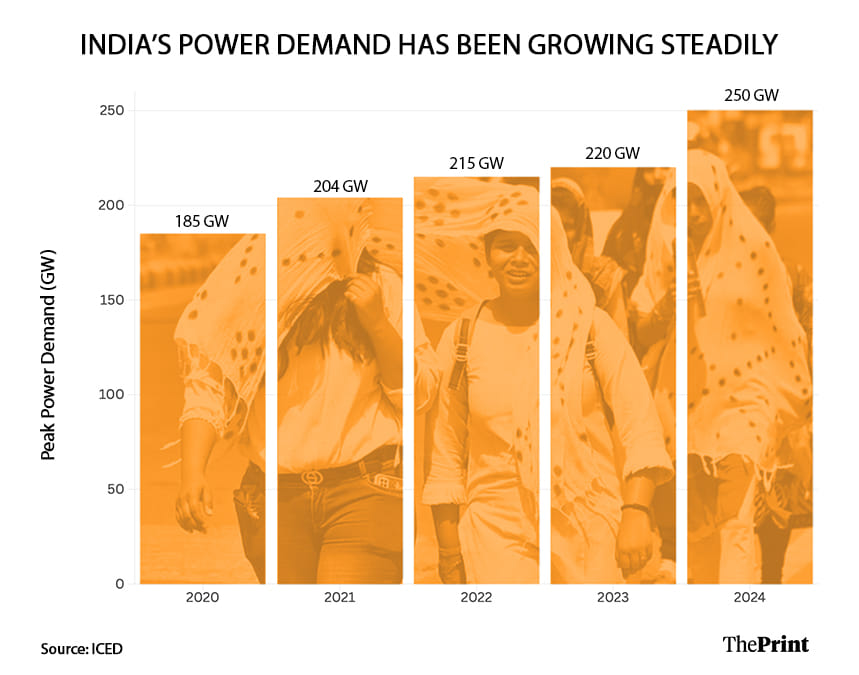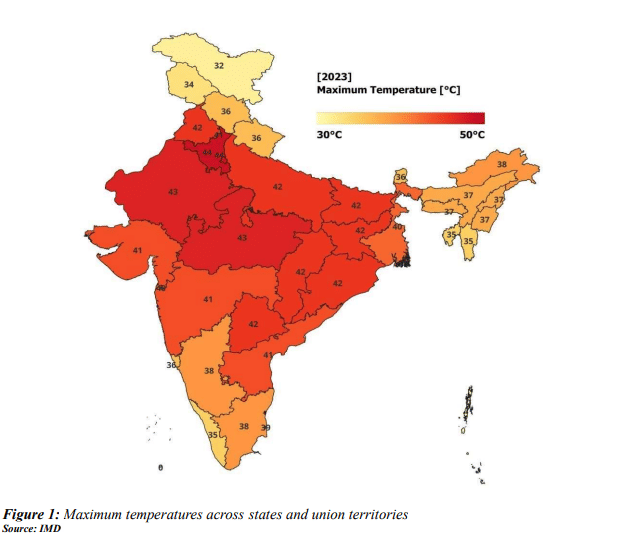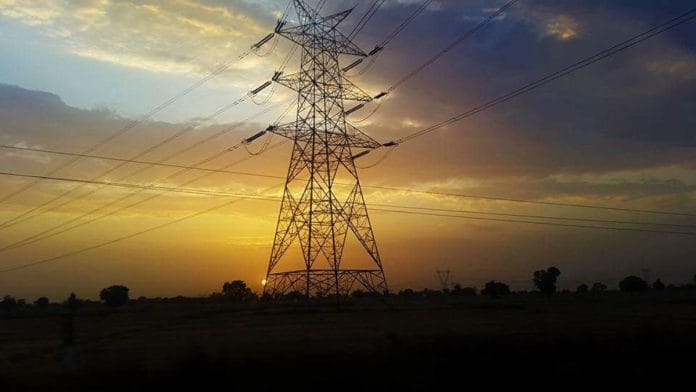New Delhi: India saw a whopping 41 percent surge in average electricity demand in the summer of 2023 when temperatures touched 50 degrees Celsius in some parts of the country. Extreme temperatures are the biggest culprit, according to a new report by the think tank Climate Trends.
Analysing consumption patterns across the country, the think tank found a direct correlation between heatwaves and peak power demand.
The trend will continue, considering the country, this year, recorded the hottest February since 1901. Increased use of cooling appliances for residential and industrial purposes is the prime driver of power demand during the summers, defined as April-June in the report.
Most of the 2023 electricity demand was fulfilled by fossil fuels, with a three percent overall increase in the consumption of fossil fuels, according to the report. It also pointed out how India’s expected power demand rise in the coming years needed to account for not just development and population growth but also climate change-induced rise in temperatures.
“We’ve been misunderstanding the sudden increase in power demand as a sign of only economic development,” said Manish Ram, lead analyst of the study, in a press release. “While there has been development, our analysis shows that rising temperatures are causing an additional surge in peak power demand.”
India’s power demand has steadily increased over the past few years, reaching an all-time high of 250 GW in 2024. The year before, i.e., in 2023, the highest demand or what is known as peak demand was 220 GW, and the year before that, it was 215 GW. According to a 2022 report by the India Environment Portal, India’s power demand is increasing faster than its electricity generation—the peak power demand almost doubled between 2011 and 2022.

Temperature & power demand
In 2023, the average maximum summer temperature reached 44 degrees Celsius in the country, with temperatures breaching 50 degrees Celsius in some places. At least 50 heatwaves with temperatures above 40 degrees Celsius and 73 heatwaves above 37 degrees Celsius were recorded, with Telangana, Madhya Pradesh, and Delhi-NCR logging the highest number of heatwaves.
The report also noted significant variations in the summer temperatures compared to average temperatures in the rest of the year, and the disparity existed in power demand, too.
The country, as a whole, saw a 22% rise in average maximum temperature in the summer of 2023, but places such as Jammu and Kashmir saw a 36% rise in average maximum temperature in the summers.
Similarly, while the country, as a whole, saw a 41% increase in average power demand during the summers, states such as Mizoram experienced a 110% increase. Other states, such as Maharashtra, saw only 16%. The report explained that the disparity was a factor of not only varying temperatures but also the consistency of power supply, industrialisation, and rural vs urban divide.

However, the one thing abundantly clear in the Climate Trends analysis was how rising temperatures led to a sharp spike in electricity demand. Over 24 degrees Celsius—categorised as the ‘comfort level’—the data showing temperatures and electricity demand resembled a “hockey-stick curve” due to the steep rise in power demand.
Since most of the electricity demand in India, at least, continues to be met using fossil fuels, the report authors cautioned against increased electricity capacity additions.
In 2023, fossil fuels accounted for 76% of the total electricity generation and renewable energy a mere 21%, and this too differed from state to state, with large states such as Uttar Pradesh, Maharashtra, and Madhya Pradesh not using even 15% of renewable energy. Bihar, Jharkhand, Chhattisgarh, and West Bengal were worse—at less than 5%. However, northern and northeastern states such as J&K, Himachal Pradesh, Uttarakhand, Arunachal Pradesh, Mizoram, Manipur, and Nagaland saw more than 90% of their electricity coming from renewable sources.

“Understanding the impact of heatwaves and high temperatures on power demand is crucial for planning annual power capacity additions,” said Archana Chaudhary, associate director of Climate Trends, in a press release. “The more fossil dependencies we add, the worse the heatwaves will get. This creates a feedback loop where higher consumption can lead to more emissions, further exacerbating climate change.”
(Edited by Madhurita Goswami)
Also Read: 5 pollution warriors who are fighting to save Delhi’s lungs






